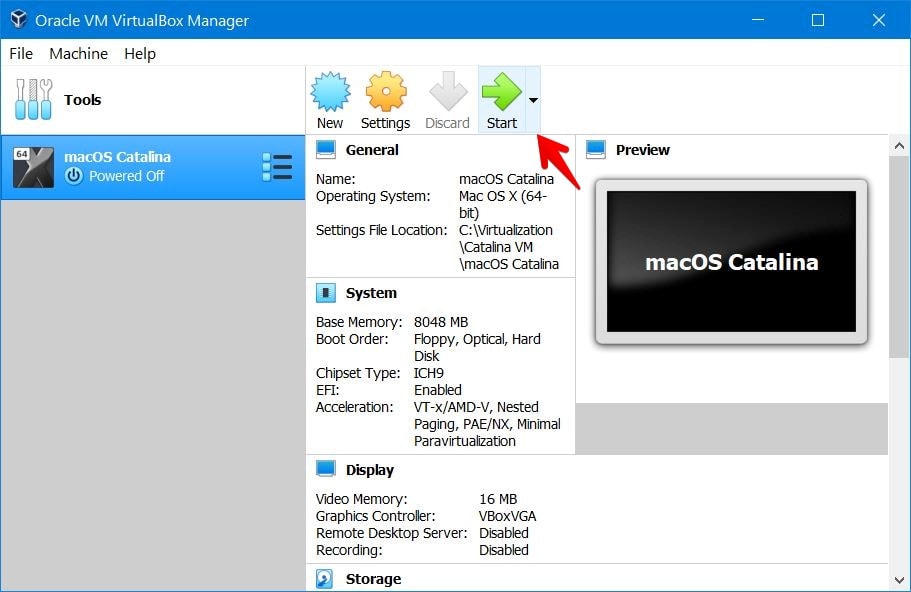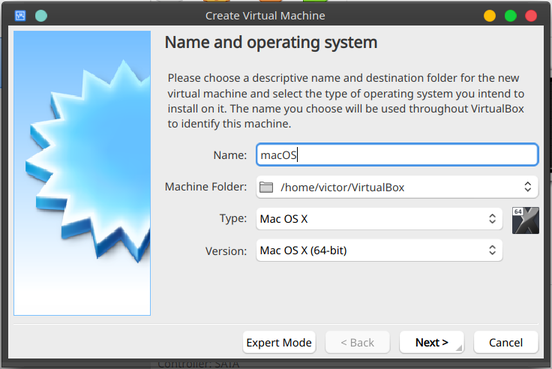

- #HOW TO RUN MAC OS IN VIRTUALBOX HOW TO#
- #HOW TO RUN MAC OS IN VIRTUALBOX INSTALL#
- #HOW TO RUN MAC OS IN VIRTUALBOX UPGRADE#
- #HOW TO RUN MAC OS IN VIRTUALBOX SOFTWARE#
- #HOW TO RUN MAC OS IN VIRTUALBOX DOWNLOAD#
In the current example VirtualBox is set up on Windows 10. You can also use the command line interface and VBoxManage if needed. You can see the graphical user interface of VirtualBox which is unified for all supported host operating systems. Once you have installed VirtualBox, open the application. Now you can perform VMware vSphere backup, set up custom disaster recovery workflows, backup Office 365 workloads and even test your Microsoft Hyper-V backups from one centralized web interface.

Looking for a powerful yet simple and affordable data protection solution? NAKIVO Backup & Replication provides a rich set of high-end backup, replication and diverse recovery features for virtual, physical, cloud and SaaS environments.
#HOW TO RUN MAC OS IN VIRTUALBOX INSTALL#
On the Ready to Install Screen, hit Install to start the installation process.Īfter finishing installation, you can tick the checkbox for starting VirtualBox after installation. Then tick the checkboxes near shortcut options and file associations.Ĭonfirm installation of VirtualBox network interfaces (click Yes). Select the manner in which you want features to be installed, clicking on the installation directory and installed components-you can leave the default values. The installation wizard that has a GUI (graphical user interface) should appear. Run the installer and define the installation options
#HOW TO RUN MAC OS IN VIRTUALBOX UPGRADE#
In the next blog post, the VirtualBox upgrade process will be explained.
#HOW TO RUN MAC OS IN VIRTUALBOX HOW TO#
In the current example, you can see how to set up VirtualBox on an example of VirtualBox 5.2.


VirtualBox 5.2 supports 32-bit hosts while VirtualBox 6.0 doesn’t.
#HOW TO RUN MAC OS IN VIRTUALBOX DOWNLOAD#
You can also download older versions, for example, version 5.2. At the moment of writing this blog post, the latest VirtualBox version is 6.0.8. If you are looking for how to set up VirtualBox on mac, download the OS X installer. Go to the official web site to download the VirtualBox installer for your operating system (Windows in this case). The majority of modern processors support hardware virtualization. If Hyper-V is installed on your Windows machine, uninstall Hyper-V before installing VirtualBox (otherwise Hyper-V will block hardware virtualization extensions needed by VirtualBox to run VMs). Otherwise, if you run 64-bit guest operating systems, you can get the error: VT-x is not available. Enable CPU virtualization featuresįirst, you need to enable hardware virtualization features on your CPU (Central Processor Unit) such as Intel VT-X or AMD-V in UEFI/BIOS of your physical computer. The process of VirtualBox installation is not difficult and is similar for all supported operating systems. Let’s explore how to set up VirtualBox on Windows. On VirtualBox you can run VMs with Windows, Linux, macOS, Solaris, FreeBSD, Novell Netware, and other operating systems. VirtualBox can be installed on Windows, Linux, macOS, Solaris, and FreeBSD. A guest OS is an operating system installed on a virtual machine running inside VirtualBox. A host OS is the operating system installed on a physical machine, on which VirtualBox is installed. VirtualBox supports a long list of host and guest operating systems. Operating Systems Supported by VirtualBox
#HOW TO RUN MAC OS IN VIRTUALBOX SOFTWARE#
Oracle VirtualBox is what you need in this case, instead of reinstalling software on your physical machine. When using a traditional you need to install the operating system on a physical machine for evaluating software that cannot be installed on your current operating system. By Michael Bose How to Use VirtualBox: Quick Overview


 0 kommentar(er)
0 kommentar(er)
